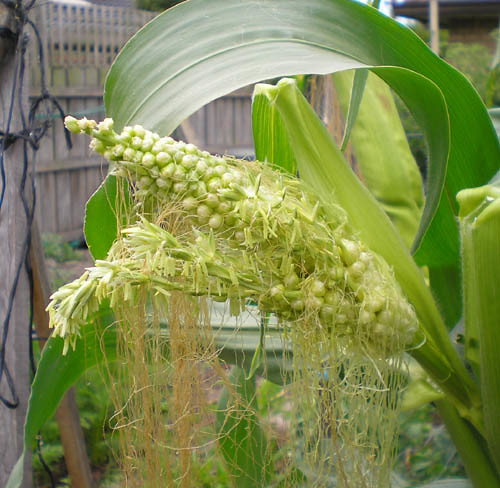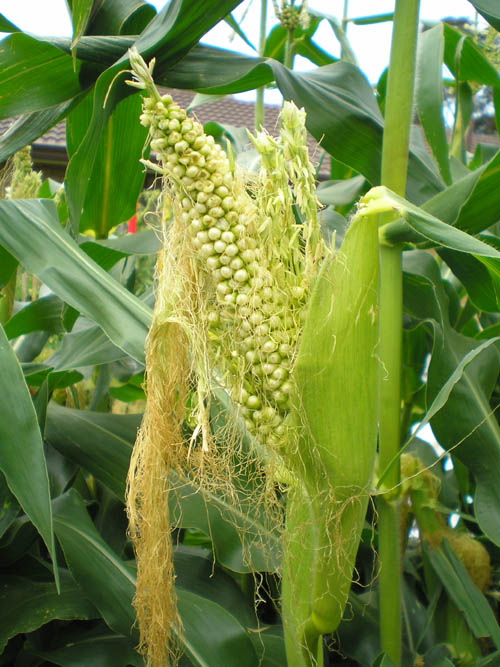What is Happening to the Sweet Corn ???
What is happening to the Sweet Corn?
Cobs are growing out the tops, where the Pollen Anthers usually are found. And the cobs are mixed in with the anthers. These cobs don't have husks, either.
When I first saw them, I thought "looks like weedicide drift to me".
Then I found it in both my gardens, 80 km apart.
And saw a reference somewhere, on someone else's blog, to it happening to them.
So, is it happening to anyone else?
Ours are DT Brown's "Kelvedon Glory F1" that we have grown from seed. If it is happening to you - are you growing the same variety, or is it only happening with "Kelvedon Glory F1", no matter who is the supplier?
Curious Minds want to Know. Because we do not like it.
Here is another shot:
We have done nothing to these to interfere with husks etc - they are as they are growing, on top of the plant. In verrrrry rich soil, I have to admit.




7 Comments:
Very odd - almost looks like a genetic defect. Could be that the soil is 'too' rich or watering has not been consistent? Got me beat. Have you googled it?
Are you sure they just didn't get pollinated enough? How disappointing!
Hi Laura,
I'm afraid it isn't quite that simple. In corn (well, at least sweet corn), there are groups of male plants at the top with anthers, bearing pollen. Then there are groups of female plants much lower down the stem,with the "silk" coming out. Corn drops from the anthers onto the "silk" and the cob is pollinated.
They do not grow together, in the same place, which is what is weird about this.
:(
Thanks your for your interest - there will be an explanation out there somewhere.
That is really freaky. I'd love to know too if others with the same variety are having the same problems. What weird gene got into that cross? Or maybe it is some epigenetic issue. I hope you figure it out. Let us know if you do.
Hi,
I just dropped by and had to leave you a comment because your post really caught my eye. I have never heard of this before (I guess you haven't either). But I have NO experience with this. It is intriguing, to say the least--and I hope it's not a long-term problem:) I'm sorry you went to all that work and now have this to deal with. That has to be hard for you to deal with:(
Take care,
Jan
Did you end up finding out what happened? I have a variety of Sweet Corn and I've found the same thing has happened. Any clues that you found out would be appreciated!!!
I'm an agronomist in the US and this is simply a genetic anomaly--it doesn't have anything to do with your pollination, etc. I would examine the seed you planted to make sure it was a hybrid?? I see it a lot in the field. Before corn was cultivated this is how it originally grew in the wild. It is simply reverting to it's roots! Anyhow, it doesn't have anything to do with your gardening ability . . .
Post a Comment
<< Home